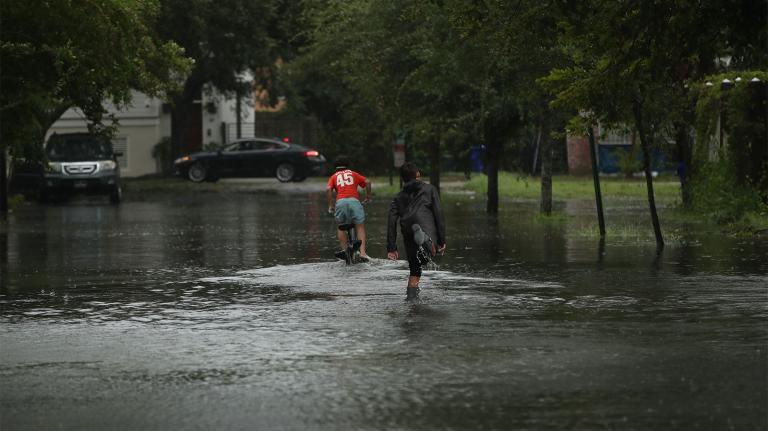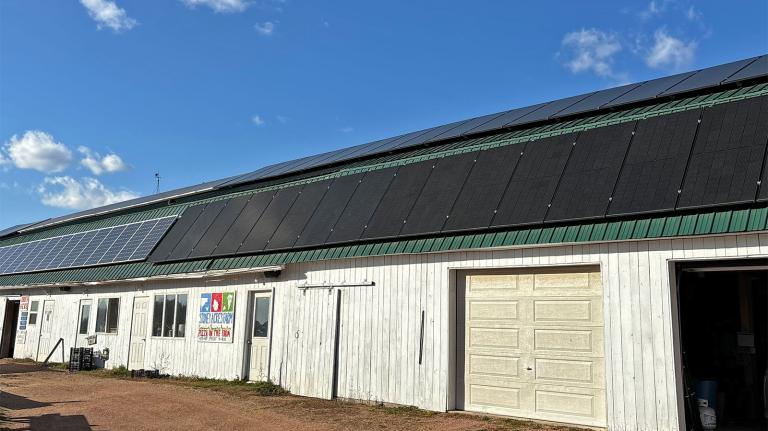For many, getting to work involves traffic and tedium. New research supports the common-sense idea that the way we commute can have a significant impact on our feelings of well-being. “How can we make it so we start the day with happiness?” asks Dr. Yingling Fan, a professor of urban and regional planning at the University of Minnesota’s Humphrey School of Public Affairs and a research scholar at its Center for Transportation Studies.
Dr. Fan’s research is the centerpiece of a new Redford Center short film, “Transportation and Happiness.” Created by Minneapolis filmmaking team Sebastian Schnabel and Cici Yixuan Wu, it’s the final installment in a series showcasing community power in a collective call for civic engagement that redefines clean transportation.
Fan’s home city of Minneapolis offers the typical American tangle of highways—but also extensive dedicated bike lanes, and an increasing number of public transportation options. Nissa Tupper, the transportation and public health planner at the Minnesota Department of Transportation, says the alternatives are only growing as the city tries to change how people think about commuting. “Most people think of being stuck behind a wheel,” she says, “which is an immediately unhappy situation.”
Tupper collaborated with Fan to explore how transportation is a crucial contributor to health. In a recent project, Fan tracked people’s emotional experiences as they travel through Minneapolis and St. Paul metropolitan areas, producing a transportation happiness map for the Twin Cities. “When we select morning peak hours, the West River Parkway is happiest,” Fan explains, referring to a tree-lined road that winds through a riparian zone of the Mississippi River. The research team was initially surprised, because the Parkway wasn’t designed as a commuter throughway, but retrospectively, Fan says, “of course people feel happier—it’s scenic and beautiful.” Traditional transportation plans emphasize the ability to travel from point A to point B. But Fan adds, “when we overemphasize efficiency, we minimize the human experience.”
The nearby suburb of Columbia Heights is hoping to apply these lessons as they focus on also how to improve transportation. Amáda Márquez Simula, the mayor of Columbia Heights, says, “Right now, it’s set up just for people to drive really quickly. It’s not a partnership for pedestrians, bicyclists, and cars.” In a region with dramatic seasons, Simula notes that taking local conditions into account will be important to success. “Winter is the hardest right now,” she admits, a time when only the hardy are excited to hop on a bicycle. That makes it even more important for public transportation to be accessible. “We want to make sure service works from the beginning all the way through to the end,” Simula says, “not just ‘the bus is safe,’ but how is waiting for the bus safe?”
Those are the kinds of holistic questions Tupper is asking in Minneapolis, too. “To a large percent, environment is actually what influences our ability to be healthy,” she says. “You can’t overstate the role of transportation in that space.” In addition to considering impacts like emissions, Tupper explains it’s critical to create routes where people feel a sense of belonging to their neighborhood, which means considering amenities like places to stop to rest, and shade.
Along Minneapolis’ 16 miles of protected bike routes, users’ experiences confirm the team’s finding that bicycling is the happiest mode of transportation. One bundled-up bicyclist says he’s biked every day since 1983. “If you’re pedaling hard, you work up a sweat and generate your own heat,” he says. Another, a mother pedaling her daughter in a cargo bike, says she likes cycling. “I’m not burning fossil fuels, I get exercise, and it’s also a great motivator for getting her outdoors.” (Her daughter chimes in, “I like to bike!”)
The team in Minnesota hopes that government agencies will replicate their work elsewhere, tracking the aspects of the built environment that can promote positive emotions. “When you put people at the center of designing cities, you empower the community,” Fan says. “In the end, our dream is to design with the community, rather than for the community.”
Interested in learning more about how this research could be applied to an area near you? Watch the film and get The Redford Center’s free Clean Transportation Community Action Toolkit.
The Community Power film series is a civic engagement initiative of The Redford Center, in collaboration with LCV and Chispa, showcasing local activists, storytellers, and culture-makers as visionary leaders with the collective power to enact lasting environmental change. The Redford Center advances environmental solutions through the power of stories that move. The League of Conservation Voters builds political power for people and the planet. Chispa is a grassroots community organizing program building the power of Latinx and communities of color in the fight for climate justice. Community Power films are generously supported by Far Star Action Fund.



